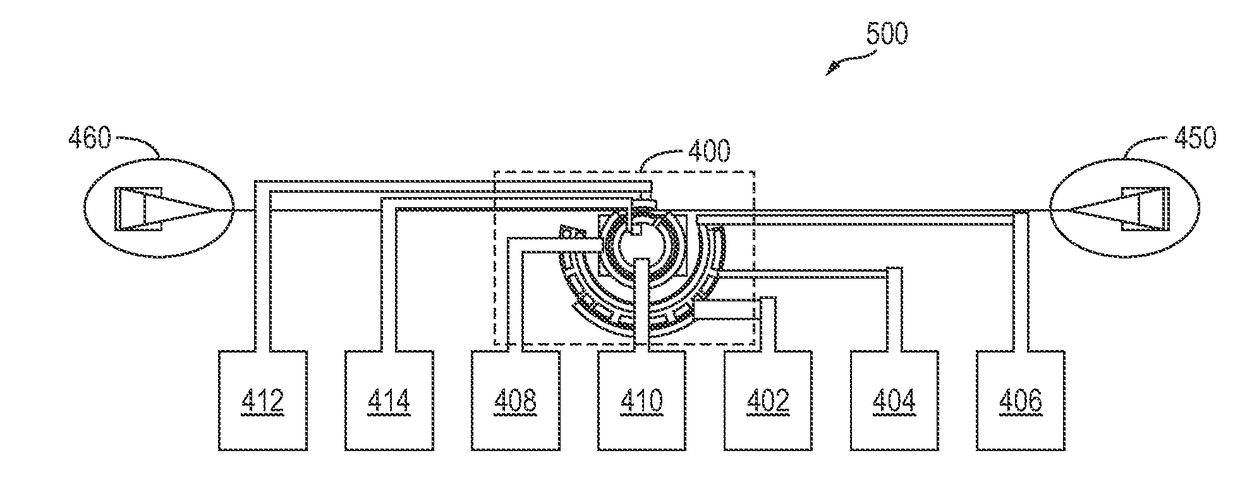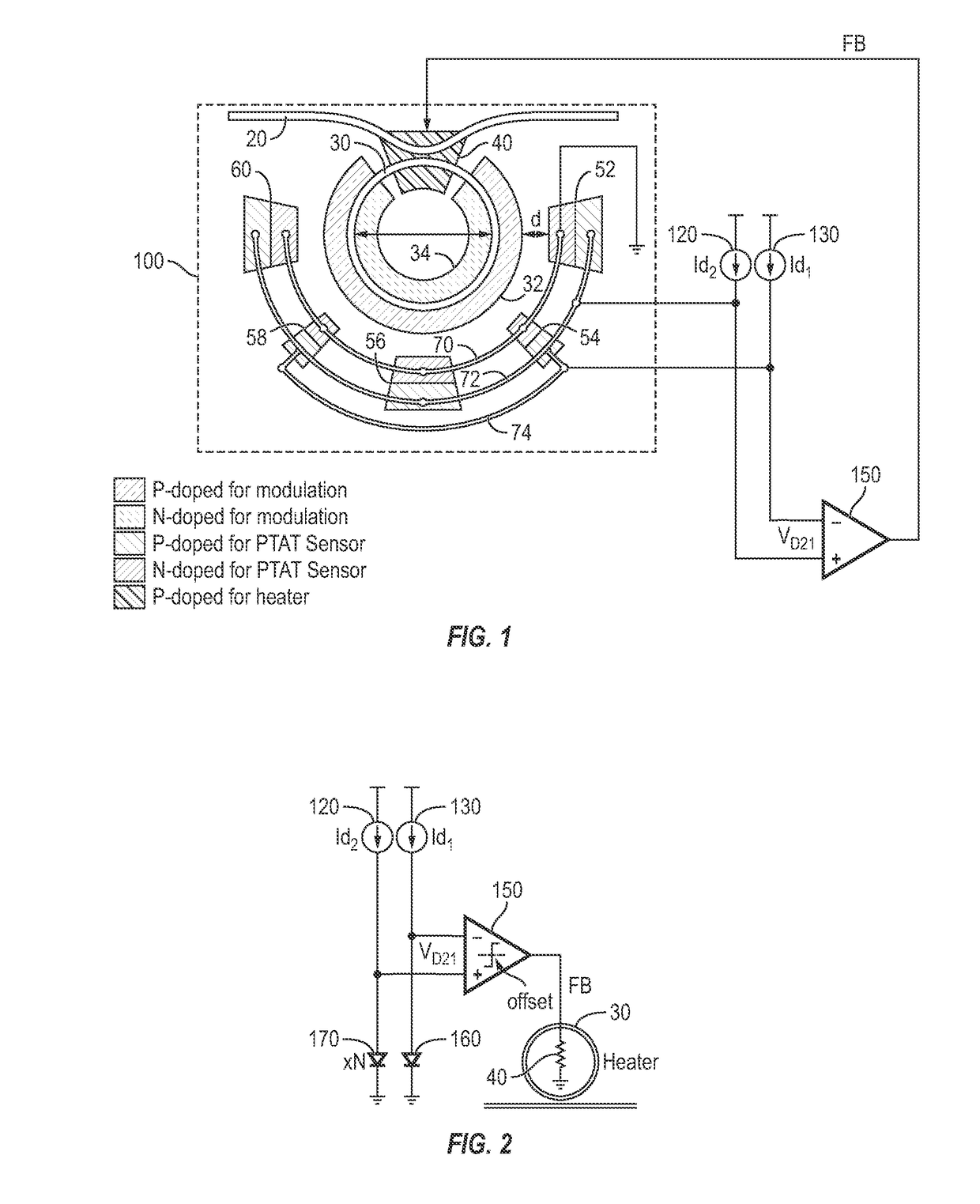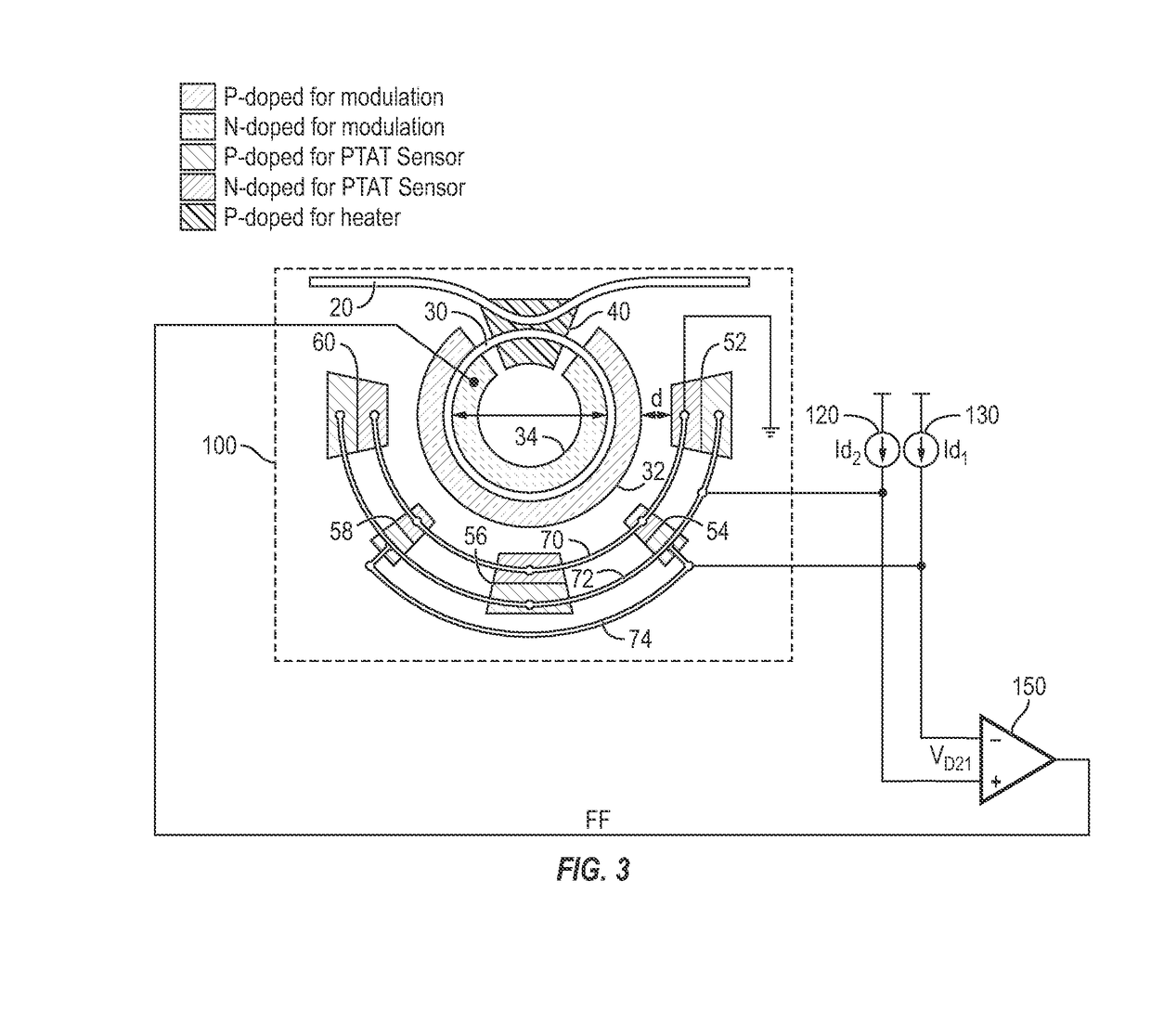Optical Ring Modulator Thermal Tuning Technique
a technology of optical ring modulator and thermal tuning, which is applied in the direction of optical waveguide light guide, optical light guide, instruments, etc., can solve the problems of thermal fluctuations of conventional optical ring modulators, large drive voltage, and relatively high power consumption of mach-zehnder based opto-electronic modulators
- Summary
- Abstract
- Description
- Claims
- Application Information
AI Technical Summary
Benefits of technology
Problems solved by technology
Method used
Image
Examples
Embodiment Construction
[0031]In accordance with embodiments of the present invention, the temperature of an optical modulator is controlled via a feedback or feedforward loop that senses the temperature of the optical modulator.
[0032]FIG. 1 is a simplified schematic top layout view of an integrated optical modulator 100, in accordance with one exemplary embodiment of the present invention. Integrated optical modulator 100 is shown as including, in part, a waveguide 20, and an optical ring 30. The optical signal traveling through waveguide 20 is coupled to optical ring 30.
[0033]Exemplary integrated optical ring modulator (hereinafter alternatively referred to as modulator) 30 is shown as further including, in part, p-doped region 32 and n-doped region 34 positioned along the inner periphery and outer periphery of ring 30 respectively. Modulator 30 is also shown as including a p-doped region 40 formed below the area where waveguide 20 is bent to enable the coupling of the light between waveguide 20 and ring...
PUM
| Property | Measurement | Unit |
|---|---|---|
| distance | aaaaa | aaaaa |
| full-width half-maximum | aaaaa | aaaaa |
| saturation currents | aaaaa | aaaaa |
Abstract
Description
Claims
Application Information
 Login to View More
Login to View More - R&D
- Intellectual Property
- Life Sciences
- Materials
- Tech Scout
- Unparalleled Data Quality
- Higher Quality Content
- 60% Fewer Hallucinations
Browse by: Latest US Patents, China's latest patents, Technical Efficacy Thesaurus, Application Domain, Technology Topic, Popular Technical Reports.
© 2025 PatSnap. All rights reserved.Legal|Privacy policy|Modern Slavery Act Transparency Statement|Sitemap|About US| Contact US: help@patsnap.com



